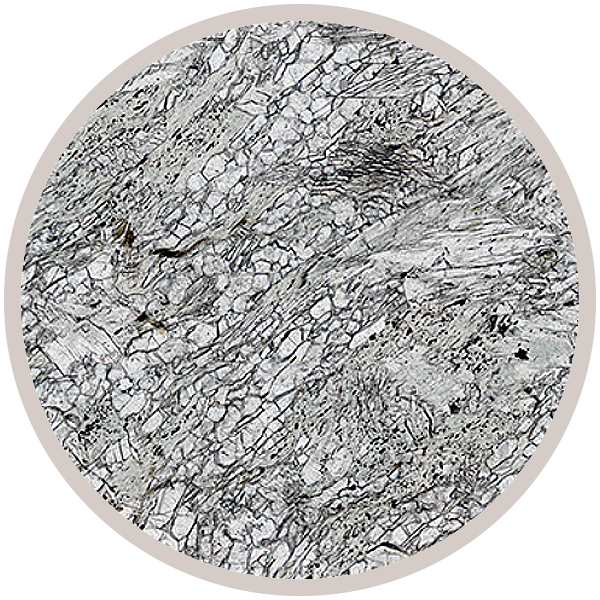
Fact sheet
This sample is a metamorphosed igneous rock from a ultramafic/mafic complex which outcrops S.W. of Achmelvich in the vicinity of An Fharaid Mhor in NW Scotland. The complex comprises a folded sequence of inter-layered ultramafic, mafic and quartzo-feldspathic gneisses. The ultramafic rocks are composed mainly of combinations of Ca-amphibole (actinolite or tremolite), talc, chlorite, dolomite and magnetite. The pronounced compositional layering possibly reflecting original igneous layering.
In thin section, the rock contains actinolite amphibole and two rare pyriboles (pyriboles are triple-chain silicate minerals, allied to both pyroxenes and amphiboles). Clinojimthompsonite forms euhedral wedge-shaped overgrowths on actinolite cores. Other associated species are chlorite, calcite and magnetite.
Since the minerals are rare it may help identification to know that rotation 1 is mainly clinojimthompsonite although one part of the central cluster is jimthompsonite.
The United Kingdom Virtual Microscope (UKVM) collection consists of igneous, sedimentary and metamorphic rocks from around the UK.
It is intended as a teaching resource, helping to tell the story of the common rock types and how they form, and reflecting the history of the UK at the margins of the continent of Europe. The collection is a series of teaching sets, for example igneous rocks from the North Atlantic Igneous Province and SW England; high-temperature metamorphic rocks from Scotland and low-temperature metamorphic rocks from Wales; and sedimentary rocks, including English limestones and sandstones.






